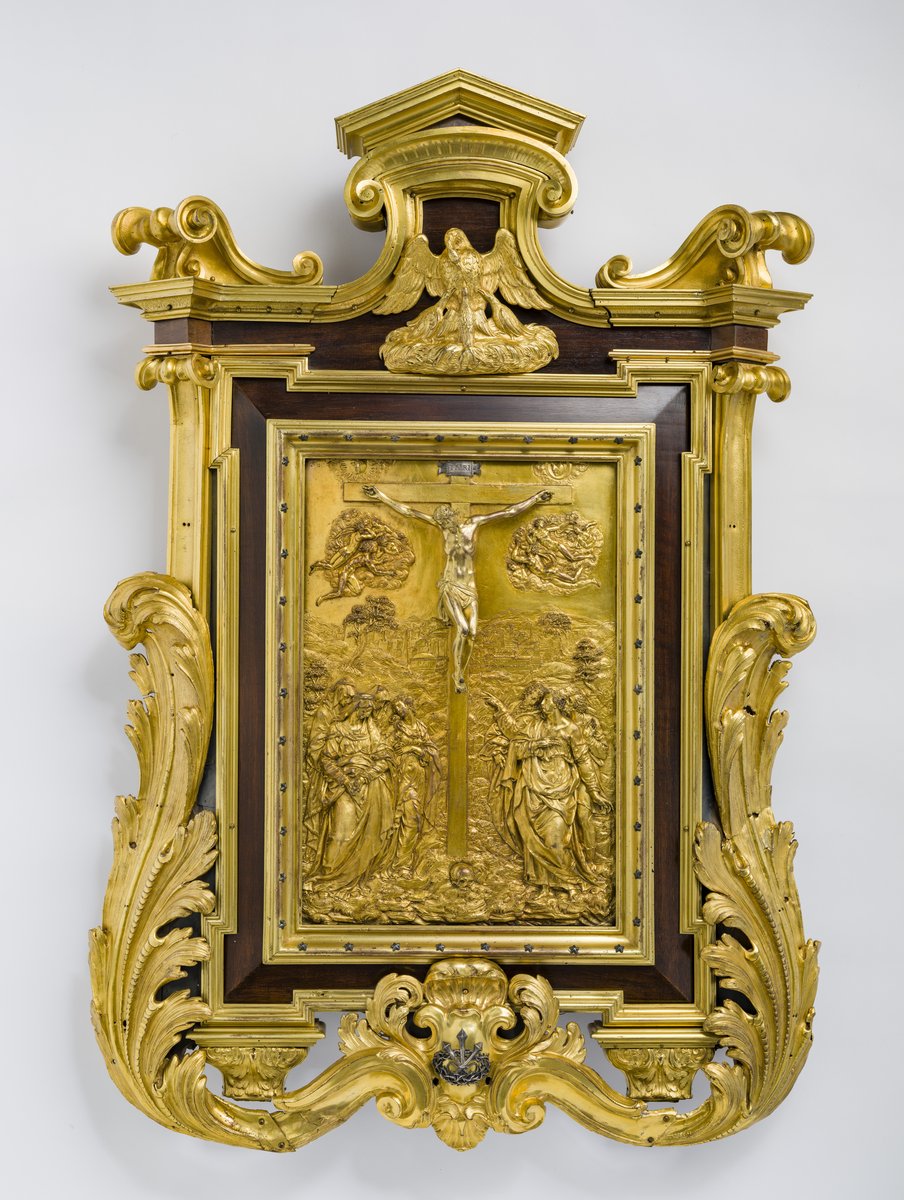
Crucifixion
Sculptures
| Artist | |
|---|---|
| Culture | French |
| Date | 17th century |
| Object type | sculpture |
| Medium, technique | bronze with black patina |
| Dimensions | 38.5 × 15.5 × 13.5 cm, 3 kg |
| Inventory number | 51.901 |
| Collection | Sculptures |
| On view | Museum of Fine Arts, First Floor, European Art 1600–1700 and British Painting 1600–1800, Cabinet 1 |
Small bronzes, which typically draw their themes from ancient mythology, have been treasured items in the cabinets of art collectors since the Renaissance. In the nineteenth century, this small bronze was considered to represent Abundantia, a mythological figure of abundance and prosperity, whose characteristic attribute is a horn of plenty laden with fruit and flowers. Later, it was referred to as a statue of Flora and then Pomona. Both the former, the goddess of spring, and the latter, the Roman goddess of fruit and gardens, have been depicted in a similar way. It is also possible that the statue represents an allegorical figure of a season, presumably Summer.
Balogh, Jolán, Katalog der ausländischen Bildwerke des Museums der bildenden Künste in Budapest, IV – XVIII. Jahrhundert: 1. Textband Bd. 1, Akadémiai Kiadó, Budapest, 1975, p. 197., no. 274.
Szmodisné Eszláry, Éva, A Régi Szoborgyűjtemény kincsei, Szépművészeti Múzeum, Budapest, 1994, p. 63.
Szmodisné Eszláry, Éva, The treasures of the Old Sculpture collection, Szépművészeti Múzeum, Budapest, 1994, p. 63.
This record is subject to revision due to ongoing research.